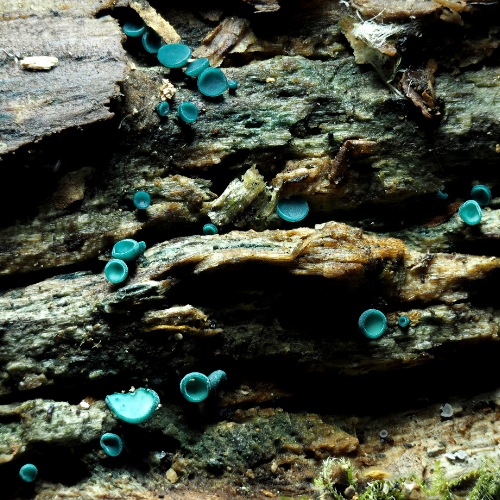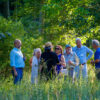
Fungus Fun Facts: Green Elfcup
Posted on March 16, 2023
Have you ever been out hiking and noticed an outstanding greenish-blue stain on a decomposing log? It’s a pretty common sight, so maybe you didn’t think much of it, or maybe you thought it was an intentional, man-made marking. This sort of sci-fi staining is actually an indicator of a mythical-sounding fungus commonly referred to as green elfcup, or Chlorociboria aeruginascens.
This type of wood staining is called “spalting”, which is defined as any form of wood coloration caused by fungi. In this case, the blue-green spalting is caused by a fungi-derived pigment called "xylindein", which is left by the Chlorociboria aeruginascens fungi. Chlorociboria-stained wood has been long-sought after by woodworkers and has been used to make wood inlays since the 14th century.
While it’s not unusual to stumble upon this spalted teal wood, it’s less likely that you’ll actually find the fruiting bodies themselves, which look a lot like tiny, bright green, saucer-shaped mushrooms! These little cups flatten out over time, eventually falling off completely. Green elfcup fungi tend to grow on decomposing, bark-free hardwoods, like oak, ash, and beech. Though most sources say the best time to hunt for the rarer fruiting body is during the winter, the few iNaturalist-documented sightings in our immediate area have all been in October. You’ll need a serious stroke of luck to locate the actual fungi this time of year, but we encourage you to hit the trail and look out for the heavily pigmented wood— it’s all over the place. Now that you know what causes it, go forth and impress your friends!






















